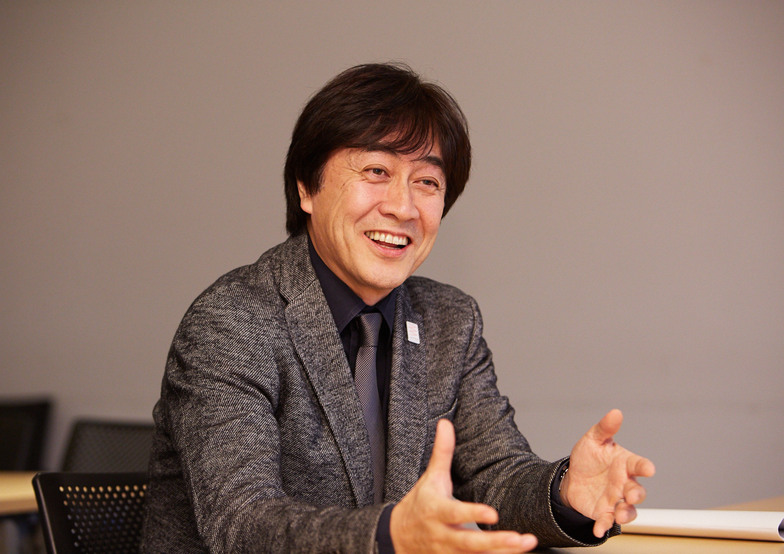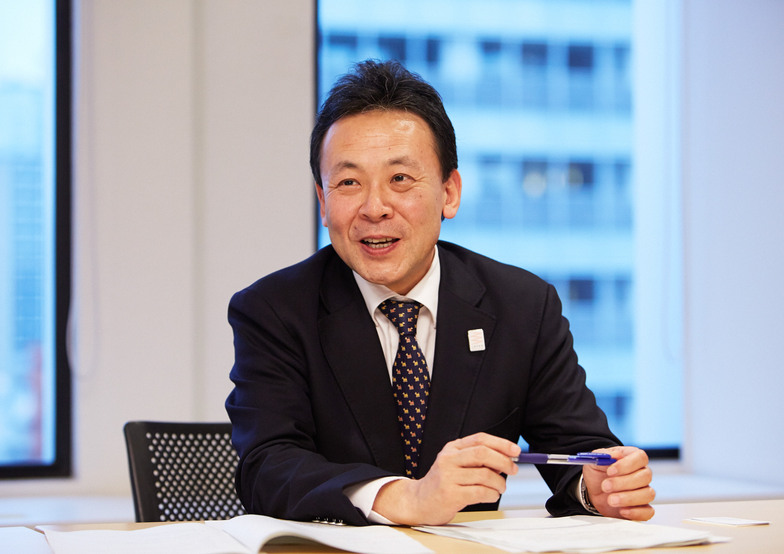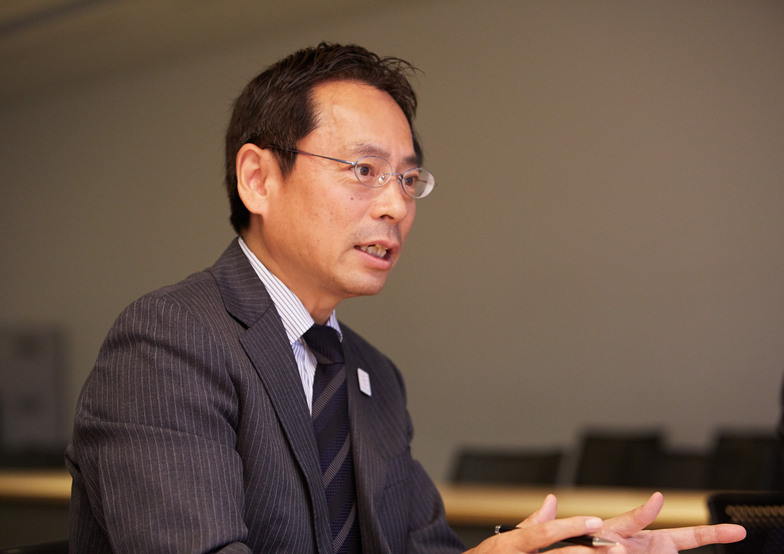The Milan International Exposition (Expo Milano) ran from May 1st to October 31st.
The Japan Pavilion, comprehensively produced by Dentsu Inc., won the Gold Award in the "Exhibition Design" category. Reflecting on this highly successful expo, which closed its doors after welcoming 21.5 million visitors, we heard from Mr. Tatsuya Kato, representative of the Japanese government; Mr. Yuki Ando, who managed the Japan Pavilion's six-month operation; Mr. Jun Naito, Exhibition Producer at Dentsu Inc.; and Mr. Takayuki Yano, Chief Director.
Interview and Composition: Aki Kanahara, Dentsu Inc. Event & Space Design Bureau
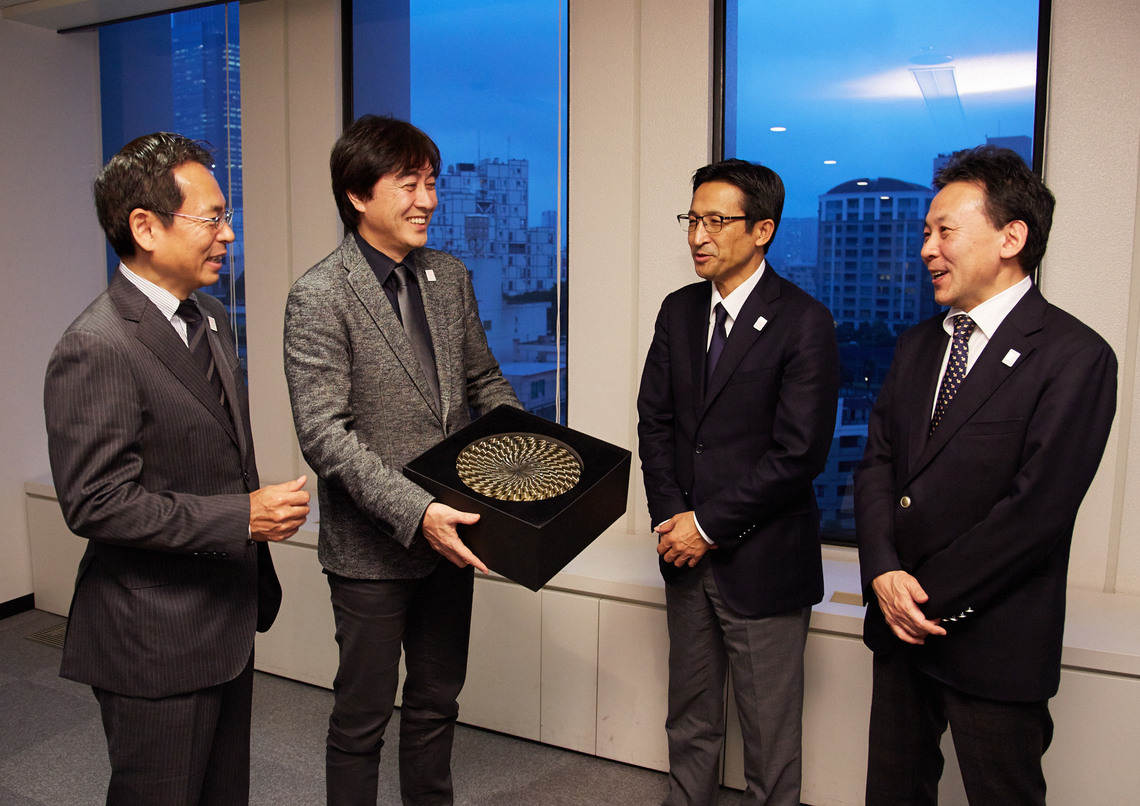
(From left) Mr. Yano, Mr. Naito, Mr. Kato, Mr. Ando
The Japan Pavilion: Fusing "Poetic Sensibility" and "Science and Technology"
Yano: You worked incredibly hard during the 184 days of the Japan Pavilion at Expo Milano. With a total attendance of 2.28 million visitors, approximately 10% of the Expo's 21.5 million visitors came to the Japan Pavilion. It became an immensely popular pavilion. Could you share your honest thoughts now that it's over?
Kato: First, I'd like to express my gratitude to everyone involved. We're truly thankful we reached 2.28 million visitors. We're also deeply grateful to our guests, especially those who endured long waits in the intense summer heat.
Yano: I'd heard Italians dislike queues, but reports say when someone who waited four hours was interviewed afterward, they reportedly said, "I'd wait in line again right now to see it one more time." A survey by a major local newspaper also reported it as "the number one country visitors want to visit after seeing the exhibition."
Kato: Let's look at the survey results. For "Which scene did you like best?" (multiple answers allowed), "HARMONY" received the most responses. About 60% of respondents commented it was "great" or "magical."
Furthermore, since this Expo's theme was "Food," it addressed the globally significant and weighty question of whether we can sustainably and safely provide food on a global scale. Objectively speaking, the Japan Pavilion's exhibition was incredibly diverse. It wasn't just entertaining; it also used various exhibition and presentation techniques that captured the theme. I think that's why visitors could feel the depth and rich diversity of Japanese food culture.
Ando: While the initial "HARMONY" exhibit was popular, the final theater experience was also extremely well-received. Visitors commented that while other pavilions primarily focused solely on food, the Japan Pavilion's theater brilliantly conveyed the message that "food is about relationships (with the world)."
Naito: What made me happy in an article from Italy's Corriere della Sera was the comment that "the balance between poetry and technology is exquisite." That was something we aimed for, but we also had doubts about whether we could truly achieve it. This time, we had so much content we wanted to convey. The challenge was how to present all that content effectively. Just presenting knowledge wouldn't be interesting, and simply showcasing Japanese technology in a straightforward way wouldn't work either. I'd long wanted to present it with a sense of poetry, lyricism, and artistry. I believe "HARMONY" embodies that perfectly, so having Italians appreciate it meant a great deal.
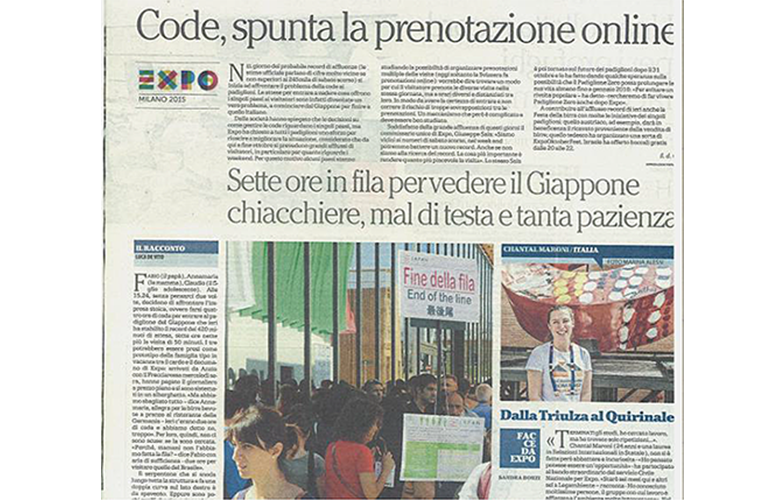
Major local newspaper "La Repubblica" reports on the Japanese Pavilion's popularity (September 20th edition)
From the very beginning, I hoped the final theater scene would leave visitors with a sense of unity as they exited the Japan Pavilion. The concept was centered around a dish placed in the middle, surrounded by family members communicating. I envisioned this circle of communication expanding to encompass the entire planet.
The Japan Pavilion was immensely popular, with waits of up to 9 hours
Ando: As the person in charge of operations and exhibitions, I spent six months inside the Japan Pavilion. A four-hour wait was considered short; sometimes it reached nine hours. When visitors who had waited that long entered "HARMONY," they instantly regained their smiles and exclaimed, "Wow, it's beautiful!" This time, Dentsu Inc. had a truly solid exhibition concept, utilized the latest display technology, and through repeated adjustments, the exhibition content was enriched. Combined with the efforts and dedication of the exhibition construction company, we achieved a meticulously crafted result.
My daily joy was going to the foyer to watch guests before they entered the theater. In May and June, attendants were just guiding guests, but by September and October, we increasingly saw attendants themselves explaining everything from how to use chopsticks to the various relationships fostered through food. That kind of growth was truly wonderful overall. Italy is a Latin country, isn't it? People who want to connect with others. Even after waiting a long time, receiving accurate information and feeling a little reassured – I think that aspect was incredibly important too.
Yano: Regarding the waiting lines, the staff managing the area outside the Japan Pavilion must have faced considerable challenges.
Ando: The Expo itself opened at 10:00 AM, but so many people lined up before the gates that the early opening time kept getting moved up—first to 9:30 AM, then to 9:00 AM. Everyone knew the Japan Pavilion was popular right from the start, and there were people determined to get there as quickly as possible. One day, we counted at the counter: after opening, people started running in, and within 10 minutes, 800 people were lined up.
How about other pavilions? They had around 150 to 200 people. There was just this word-of-mouth that you absolutely had to go to the Japan Pavilion first. The cutoff time for entry sometimes stretched into the 3 o'clock or even 4 o'clock hours. But the Italian staff were wonderful; if you politely explained the situation, they'd say, "Understood. Then I'll come early tomorrow," and they really understood.

The Japan Pavilion line, where some days meant waiting 9 hours
35 municipalities, 20 organizations, and 3 government agencies showcased regional Japanese content!
Yano: At the event plaza, 35 municipalities, 20 organizations, and 3 government agencies provided various regional content daily. The restaurants offered enjoyable dining experiences, including a food court and authentic Japanese cuisine like "Mino Kichi." Beyond the exhibits, one of the Japanese Pavilion's attractions was showing visitors that sushi and tempura aren't the only Japanese foods—a discovery for many Italians.
Ando: Restaurant surveys showed over 90% of respondents rated it "good." Positive comments included "My favorite restaurant at the Expo" and "The sushi was stunning in both appearance and taste."
For the food court, we counted based on the number of registers. This represents the total number of people who passed through the registers. Initially, it was around 1,000 registers, but after summer, it doubled to 2,000 registers in the latter half. Customers also commented that the Japanese ordering system was very efficient and good. At other restaurants, you sit down, get the menu, place your order, and it takes about 30 minutes for the food to arrive. There were many repeat customers too. Minokichi is quite an expensive kappo restaurant, yet it had a repeat customer rate of 40%.
Kato: The Event Plaza alone had 35 municipalities and 27 groups participating. This ties into the Japan Pavilion's theme of "diversity." While the general image of Japan is often "Japan = Tokyo and Kyoto" or "Japanese food = sushi and tempura," we wanted to comprehensively introduce the diverse cultures, cuisines, traditional arts, and regional products rooted in different parts of Japan. The real impact of live demonstrations and actually displaying items. We also offered tastings and samples, providing a different kind of enjoyment beyond the exhibits. It became an all-Japan effort. By the latter half, the Event Plaza alone drew about 2,000 to 3,000 people daily and was extremely well-received.
Naito: Exactly. Having the food court right after the exhibits, followed by the event plaza, made it incredibly lively and fun. Usually, people just leave the pavilions and it gets quiet, but this stayed pleasantly bustling. Events are enjoyable precisely because there are both performers and spectators.
Ando: Exactly.
Kato: The local governments were really putting in a lot of effort too. It's Europe, so distance and costs are significant, but 21 governors alone came this time. That's because the expo's theme fit perfectly with regional revitalization and globalization.
Yano: It would be great if people remember even just the name of one Japanese region, leading to more inbound tourism to Japan. For example, going to Yamaguchi Prefecture to eat fugu, or conversely, exporting local specialties to Europe.
Kato: Japan's agricultural and food exports are dominated by four major Asian countries/regions and North America, accounting for about 80% of the total. While Europe is a mature market, it still holds potential demand and purchasing power. This opens possibilities not just for goods exports but for the entire service industry. Some of the restaurants in this Japan Pavilion have expanded into Asia, but haven't yet reached Europe. In a way, the Milan Expo served as a test marketing opportunity.











